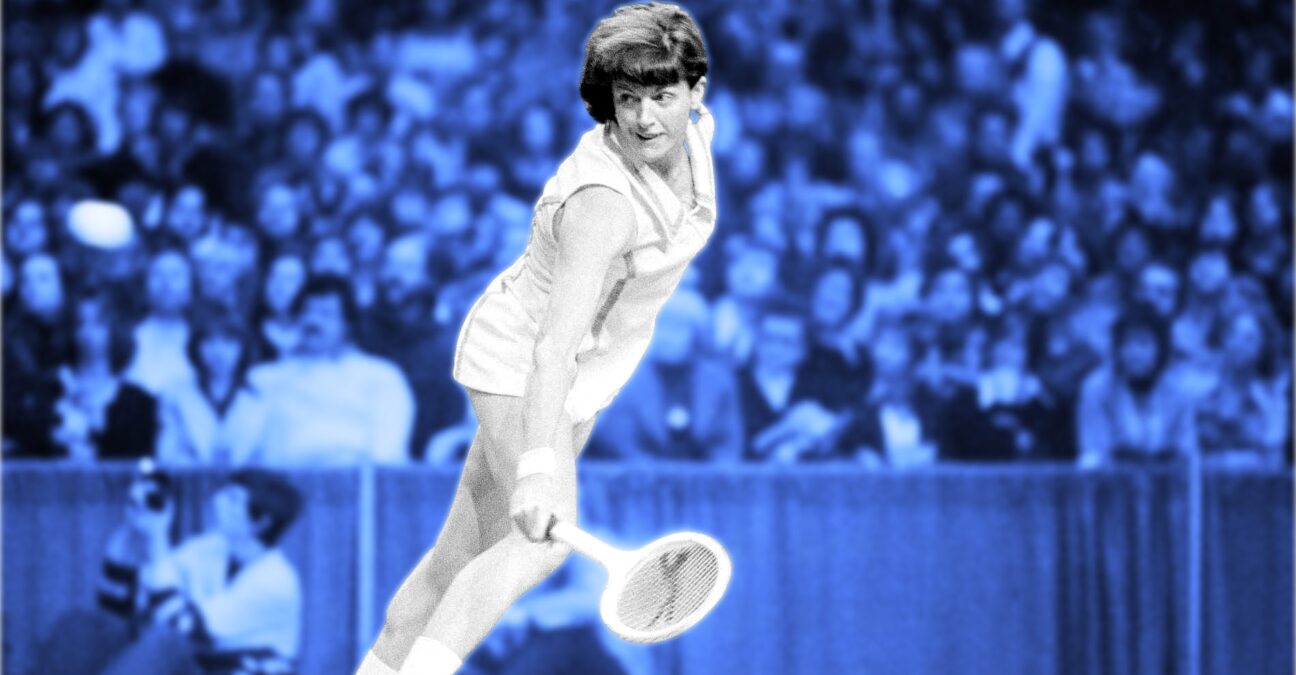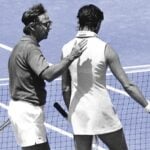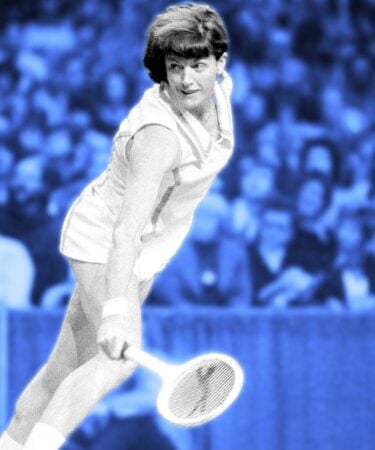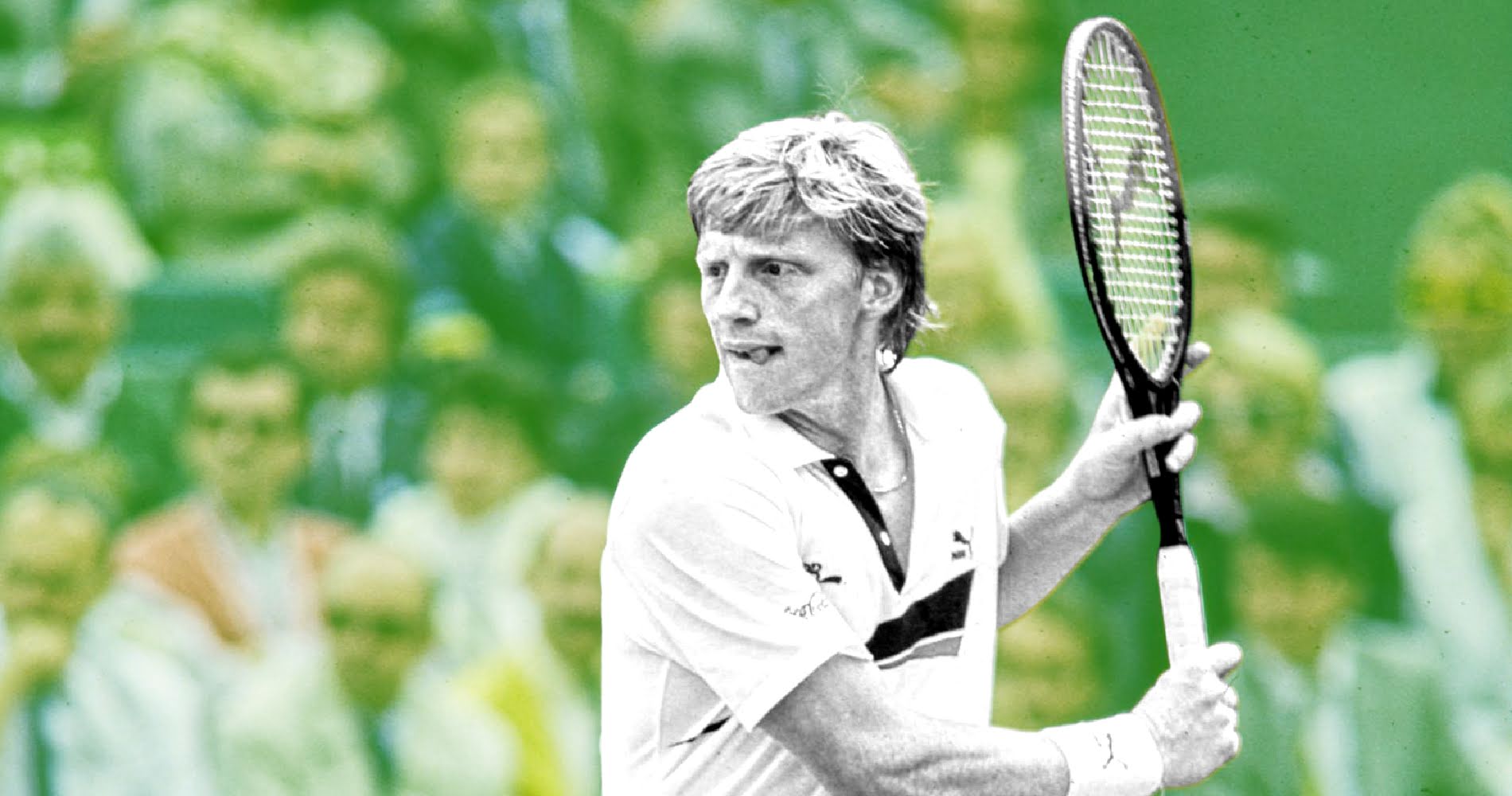January 1, 1973: The day Margaret Court won a record 11th Australian Open title and became the first mother to win a Major
Every day Tennis Majors takes you back in time to celebrate a great moment in tennis history. Today, we go back to 1973 to witness how Margaret Court came back to the Tour in style. Having given birth to her first child in 1972, Court won the Australian Open to become the first mother to win a Grand Slam in the Open Era
 Margaret Court at the Australian Open
Image Credit: Panoramic
Margaret Court at the Australian Open
Image Credit: Panoramic
What exactly happened on that day?
On this day, January 1,1973, Margaret Court established a record that stands to date, triumphing at the Australian Open for the 11th time. To achieve that feat, she overcame injury to defeat Evonne Goolagong in the final (6-4, 7-5). Court also became the first mother in the Open era to win a Grand Slam tournament.
Grand Slam winning mothers (Open Era)
- Margaret Court: Australian Open (1973), Roland-Garros (1973), US Open (1973)
- Evonne Goolagong: Wimbledon (1980)
- Kim Clijsters: US Open (2009, 2010), Australian Open (2011)
The players involved: Margaret Court and Evonne Goolagong
- Margaret Court: the all-time Great from Australia
Margaret Court was born in 1942 in Albury, New South Wales. The Australian is considered among the greatest female tennis players of all time. Her long reach and great ability to move made her serve-and-volley game lethal in those days. Her strength was her main asset, allowing her to produce very effective overheads. Court had claimed nine Grand Slam titles in singles before the Open Era and in 1964, she had already achieved a career boxed Grand Slam: she had won all four major tournaments in singles, doubles and mixed doubles.
In 1963 and 1965, she achieved the calendar-year Grand Slam in mixed doubles. The Open revolution in 1968 didn’t put an end to her domination on the sport. In 1969, the only major title she failed to claim was Wimbledon and, in 1970, she won the four Grand Slam tournaments, a feat that had been achieved only once before in women’s tennis history (by Maureen Connolly in 1953). Court’s domination on the tour came to a halt in 1971 as she became pregnant with her first child, Daniel, who was born in March 1972. However, she was soon back on the tour before the season ended, reaching the semi-finals at the US Open.
- Evonne Goolagong: The Aborigine Australian who became a world beater
Evonne Goolagong, nicknamed “Sunshine Supergirl”, was renowned for her grace and carefree game style. She was born in 1951 in an Australian Aboriginal family, and despite the heavy racial prejudice in rural Australia, she was encouraged to play tennis. In 1965, she was sent to Sydney to attend high school and improve her game. Her breakthrough year on the international scene came in 1971, when she triumphed at both Roland-Garros and Wimbledon, beating Court in the final (6-4, 6-1). In the following years, she appeared in two consecutive Australian Open finals and in 1972, she also reached the finals in Paris and at Wimbledon (each time defeated by Billie Jean King, 6-3, 6-3).
The place: Kooyong Stadium, Australia
Unlike the other Grand Slam tournaments, the Australian Open (first known as the Australasian Championships and later the Australian Championships) had moved several locations throughout the years. In fact, the event switched cities every year before settling down in Melbourne in 1972, and no less than five Australian cities had hosted the event at least three times: Melbourne, Sydney, Adelaide, Brisbane and Perth. The event was held on grass at the Kooyong Stadium in a posh easter suburb of Melbourne. Its position on the calendar had changed several times as well, between early December and January, going from being the first Grand Slam of the year to being the last. At the time, many of the top players skipped the Australian Open, mainly because of the remote location and the low prize money.
The facts: Margaret Court injures her stomach muscles in the semi-final
For the first time in her career, when the 1973 Australian Open began, Margaret Court, the second woman in tennis history to have achieved the calendar-year Grand Slam, had not reached a Grand Slam final in more than two years. However, the greatest player of her time had a valid reason: nine months earlier, in March 1972, she had given birth to her first child, Daniel.
Court returned to the tour early enough to compete at the US Open, where she had made her way into the semi-finals (defeated by Billie Jean King, 6-4, 6-4). By the end of December, Court had won 11 out of 15 tournaments she entered.
At the Australian Open, where she had already triumphed 10 times in the past and had only been defeated twice, she was named the top seed. Court appeared to be in great shape: her first two opponents, Nathalie Fuchs and Brenda Dart, were both double-bageled (6-0, 6-0), and she didn’t drop a single set on her way to the final. However, during her semi-final win against Kerry Melville (6-1, 6-0), the Australian injured her stomach muscles.
Between Court and an 11th Australian Open title stood the second seed, fellow Aussie Evonne Goolagong. The two women had already faced each other several times, and, after Court had easily prevailed in their initial encounters, she was pushed to her limits in the 1971 Australian Open final (2-6, 7-6, 7-5) and finally defeated Goolagong in the Wimbledon final the same year (6-4, 6-1).
Despite her injury, which mainly affected her serve and overhead, Court delivered an impressive performance to outclass Goolagong (6-4, 7-5). On a particularly hot New Year’s Day, with a temperature of 45°, the 10-time winner of the tournament put constant pressure by attacking the net on her opponent’s weakness – her forehand. It only took Court just one hour and two minutes to prevail and claim an incredible 11th Australian Open title in front of 11,500 spectators.
What next? Rafael Nadal breaks Margaret Court’s record in 2019
Margaret Court remains the only player to date to win the Australian Open singles title 11 times in her career, with nine-time champion Novak Djokovic two behind. Court would also remain the only player to win one Grand Slam 11 times until Rafael Nadal won Roland-Garros for the 11th time in 2018. The Spaniard then established a new record by adding more French Open titles and currently owns 14 in Paris.
would remain the only player in tennis history to win one Grand Slam tournament so many times for 45 years, until Rafael Nadal won Roland-Garros for the 11th time in 2018. The Spaniard then established a new record with a 12th and even a 13th triumph at the French Grand Slam.
Players with most titles in one Grand Slam
| Tournament | Men | Women |
| Australian Open | Novak Djokovic (9) | Margaret Court (11, including 4 in the Open era)Open era only: Serena Williams (7) |
| Roland-Garros | Rafael Nadal (14) | Chris Evert (7) |
| Wimbledon | Roger Federer (8) | Martina Navratilova (9) |
| US Open | All-time: Richard Sears, William Larned, Bill Tilden (7) Open era: Jimmy Connors, Pete Sampras, Roger Federer (5) | All-time: Molla Mallory (8) Open era: Chris Evert, Serena Williams (6) |
Court is still the only woman in history to have completed two “Grand Slam Boxed Sets” (meaning winning all the Grand Slams in singles, doubles and mixed doubles), once as an amateur, and the second time as a pro. 1973 would be her last great season, during which she would claim her final three Grand Slam titles – a feat unfortunately clouded by her defeat to Bobby Riggs in the so-called “Mother’s Day’s Massacre”.
Court would retire in 1977, with an overall Grand Slam record of 64 titles, including 24 in singles, a record that still stands to this date. In 2003, a 6000-seat arena would be named after her in Melbourne Park. She would turn into a Christian minister in Perth but would become embroiled in several controversies due to the homophobic comments that she often made.
Evonne Goolagong would go on to win the Australian Open four times in a row (1974-1977). She would lose in the Wimbledon final in 1975 and 1976 before claiming a second crown in 1980, defeating Chris Evert in the final (6-1, 7-6). By triumphing at the All England Club that year, she became the first mother to achieve that feat since Dorothea Lambert Chambers in 1914 (she had given birth to her first child in 1977). The only major title missing from her list of achievements would be the US Open, where she would finish runner-up four times (1973-1976) without ever lifting the trophy. She would retire from the game in 1985 and was retrospectively appointed world No 1 in 2007 as a computer glitch prevented her from being ranked world No 1 for two weeks in 1976.


















